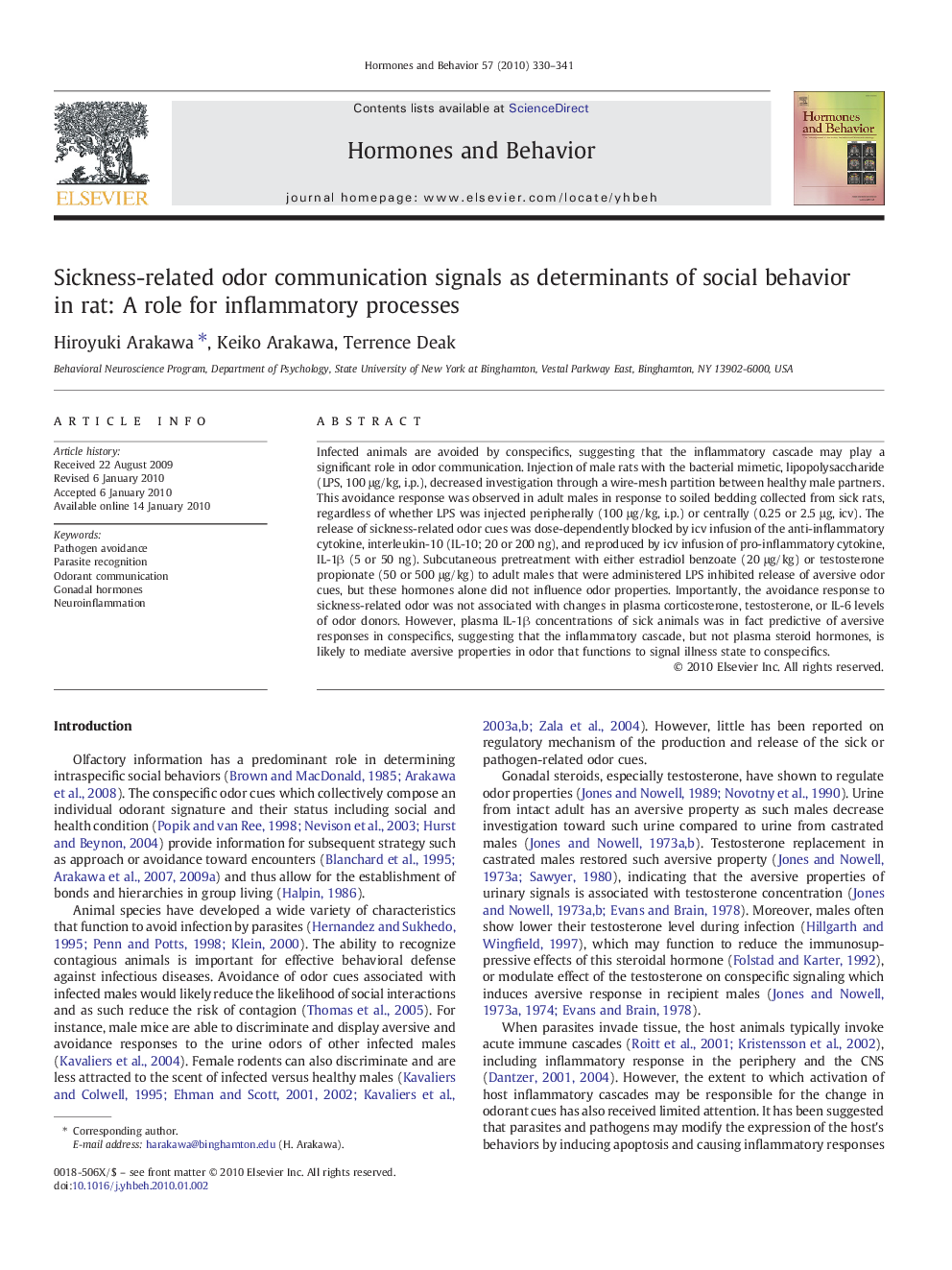| کد مقاله | کد نشریه | سال انتشار | مقاله انگلیسی | نسخه تمام متن |
|---|---|---|---|---|
| 323529 | 540696 | 2010 | 12 صفحه PDF | دانلود رایگان |

Infected animals are avoided by conspecifics, suggesting that the inflammatory cascade may play a significant role in odor communication. Injection of male rats with the bacterial mimetic, lipopolysaccharide (LPS, 100 μg/kg, i.p.), decreased investigation through a wire-mesh partition between healthy male partners. This avoidance response was observed in adult males in response to soiled bedding collected from sick rats, regardless of whether LPS was injected peripherally (100 μg/kg, i.p.) or centrally (0.25 or 2.5 μg, icv). The release of sickness-related odor cues was dose-dependently blocked by icv infusion of the anti-inflammatory cytokine, interleukin-10 (IL-10; 20 or 200 ng), and reproduced by icv infusion of pro-inflammatory cytokine, IL-1β (5 or 50 ng). Subcutaneous pretreatment with either estradiol benzoate (20 μg/kg) or testosterone propionate (50 or 500 μg/kg) to adult males that were administered LPS inhibited release of aversive odor cues, but these hormones alone did not influence odor properties. Importantly, the avoidance response to sickness-related odor was not associated with changes in plasma corticosterone, testosterone, or IL-6 levels of odor donors. However, plasma IL-1β concentrations of sick animals was in fact predictive of aversive responses in conspecifics, suggesting that the inflammatory cascade, but not plasma steroid hormones, is likely to mediate aversive properties in odor that functions to signal illness state to conspecifics.
Journal: Hormones and Behavior - Volume 57, Issue 3, March 2010, Pages 330–341